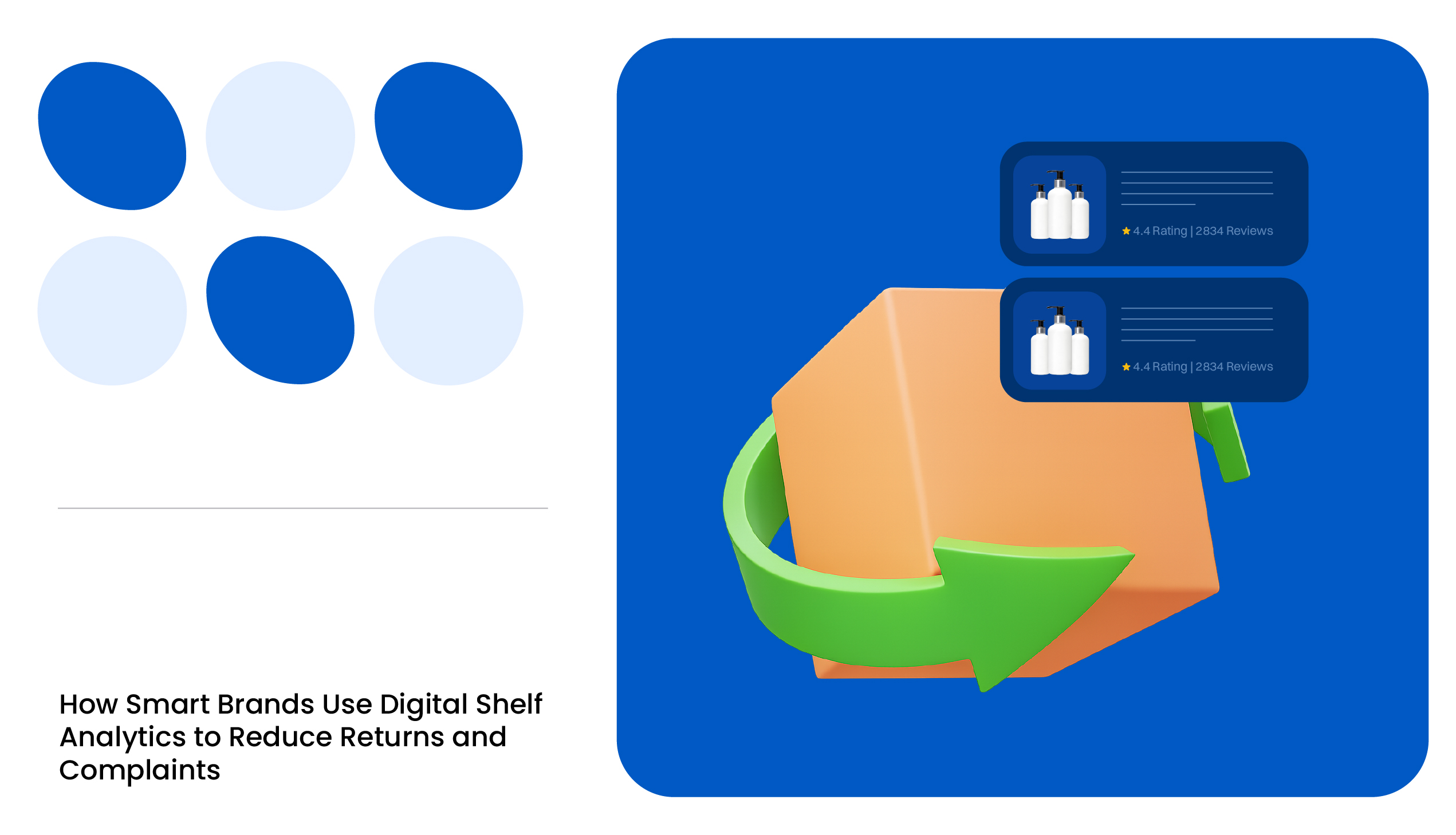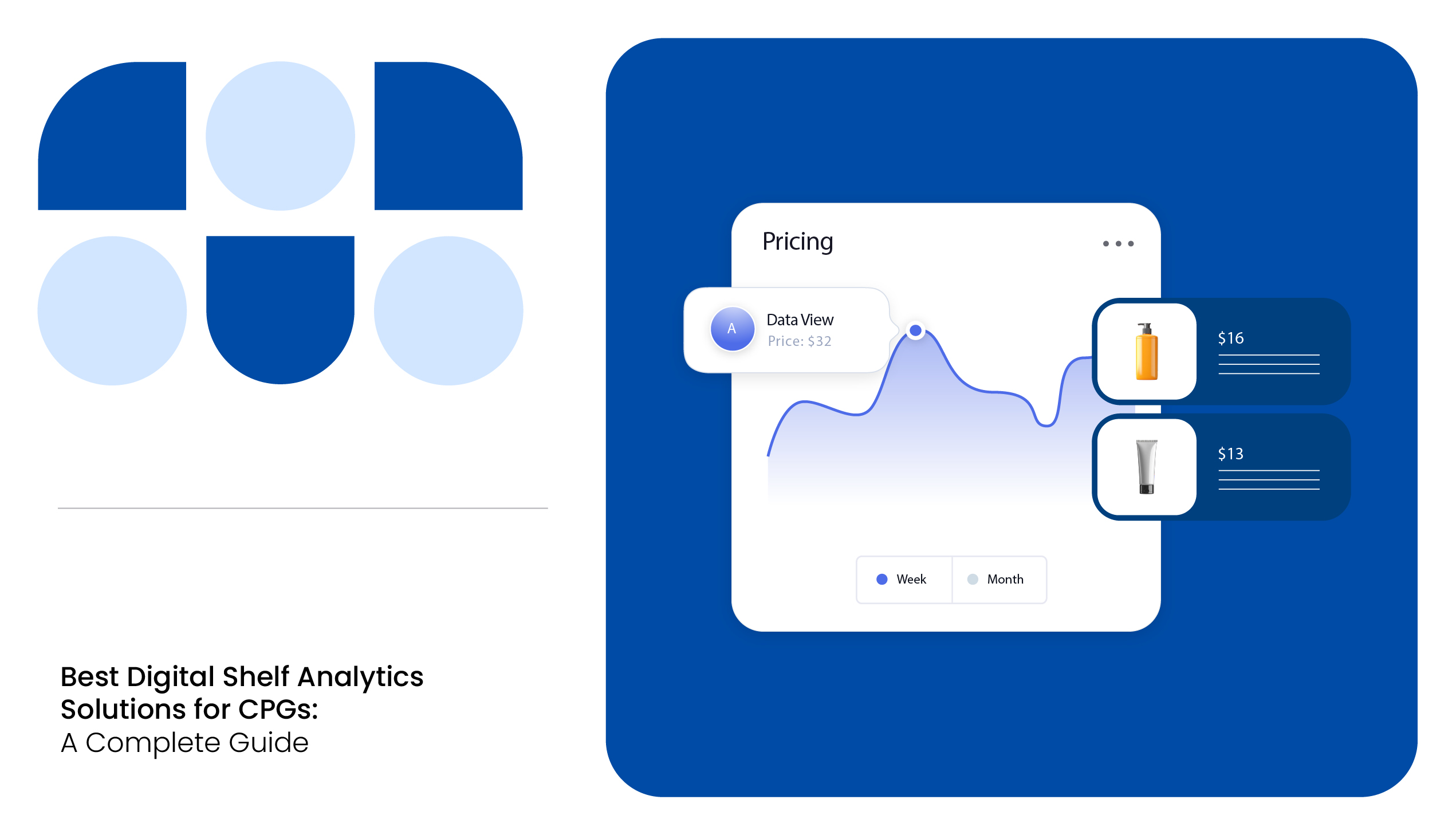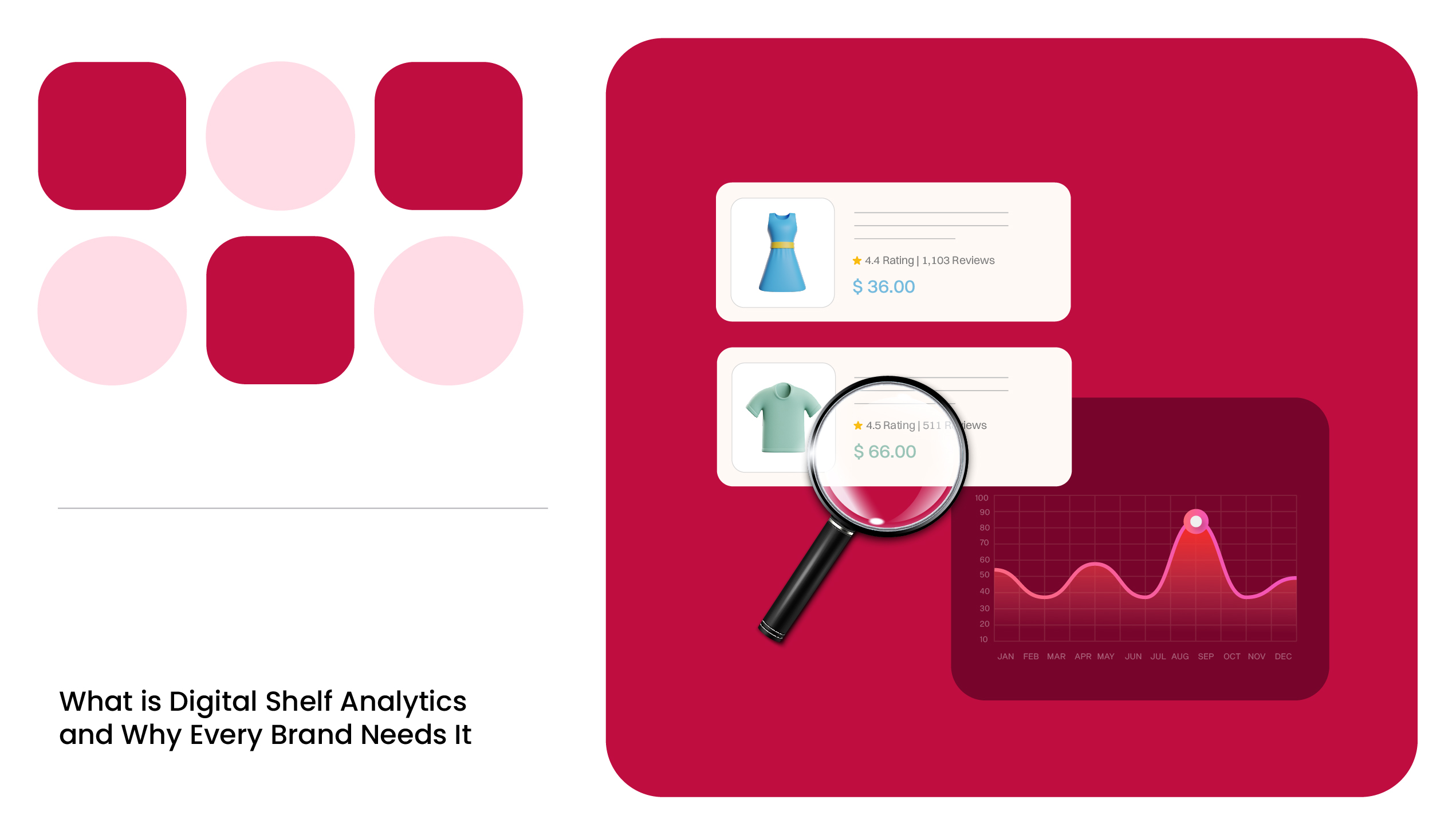Imagine you’re a seller who has built an online store on various e-commerce platforms, complete with detailed product descriptions and photos. But here’s the reality—your products are lost in millions of similar listings. Customers can’t find you, and you’re missing out.
This is where product matching in e-commerce comes into play. Product matching ensures your products are accurately identified across platforms, making it easier for customers to discover them.
Furthermore, digital shelf analytics enhances this process by providing insights into how products are performing in the marketplace. Together, these solutions can help sellers improve visibility and ultimately drive more conversions.
What is Product Matching?
Product matching is the process of comparing, identifying, and linking similar or identical products in a digital commerce platform. For example, if you sell a specific type of sneakers, product matching would group all relevant listings, even if the titles differ a bit.
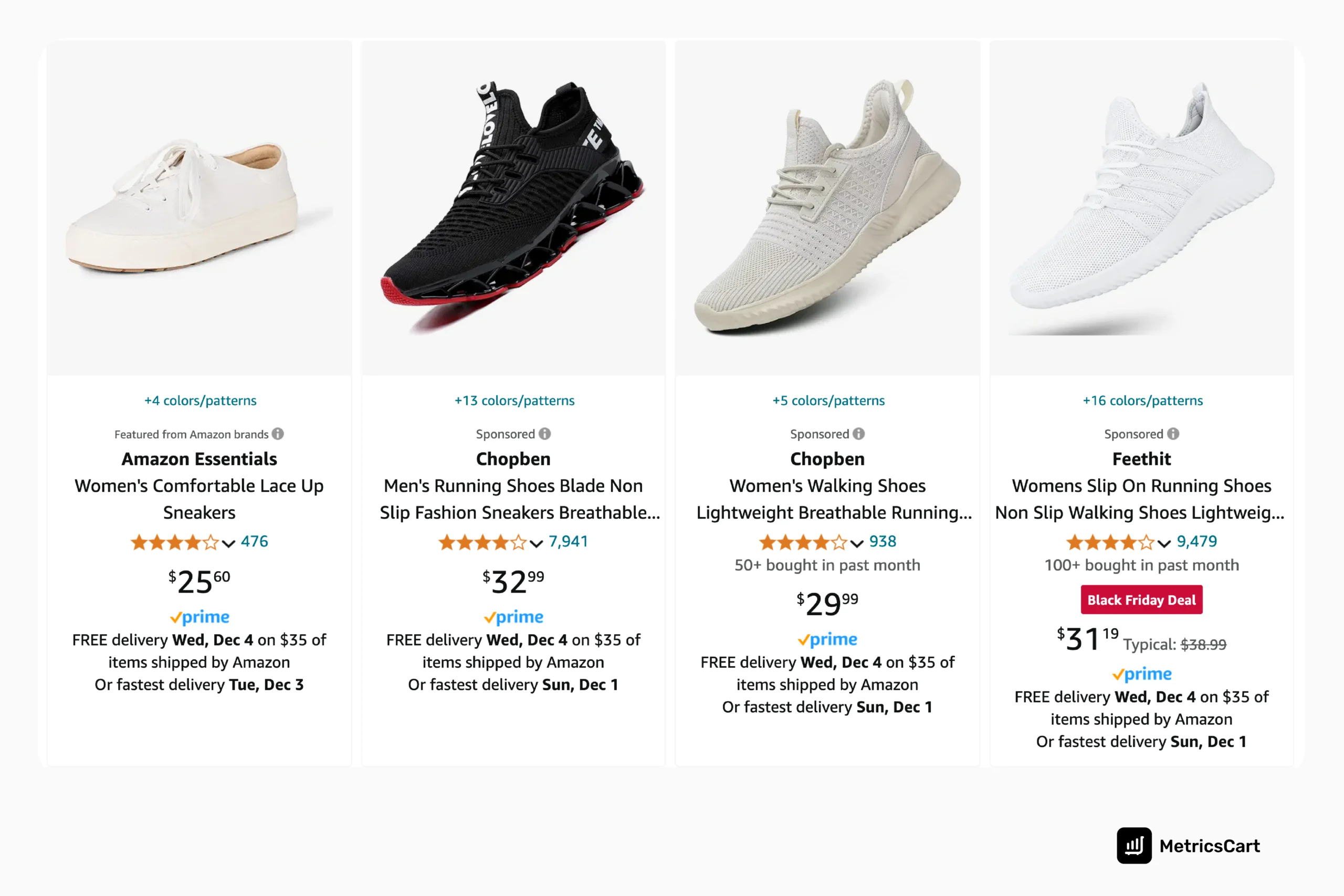
Despite the variations in the item, a product matching model recognizes these as identical shoes based on shared details like brand, model, size, and color.
Product matching utilizes sophisticated algorithms to compare product details across various platforms. It analyzes titles and descriptions, images, and specifications to find a similar product, even if it’s listed with slight variations. This ensures that products are correctly categorized, making it easier for customers to see what they’re looking for and improving search rankings.
Types of Product Matches
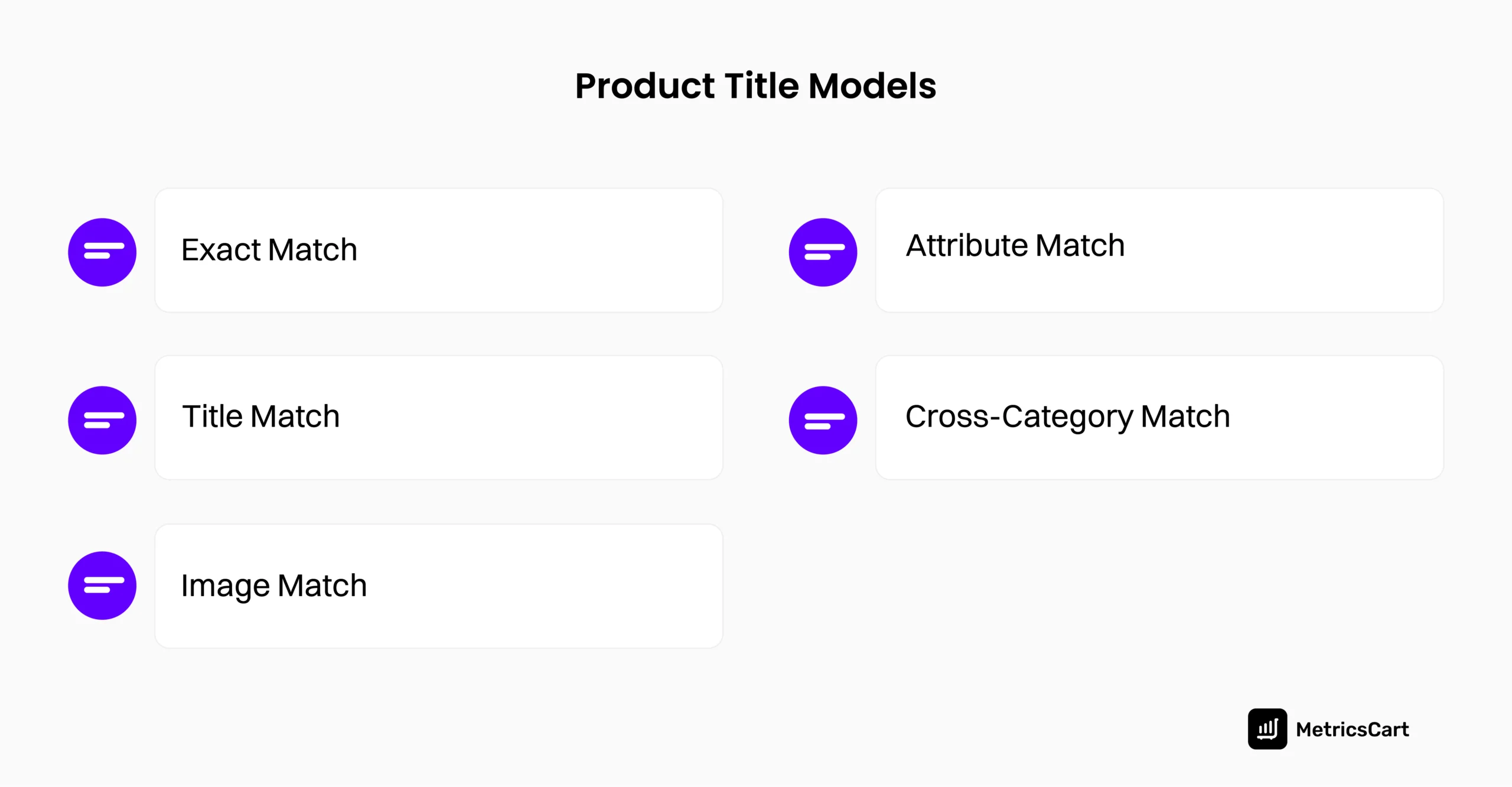
Exact Match
An exact match happens when two products have the same attributes, such as brand, model number, and specifications, across different platforms or categories. For example, matching a smartphone model across Amazon, Walmart, and eBay ensures consistency in pricing and details.
Title Match
The title match model employs machine learning (ML) to recognize identical titles even when phrased differently and group similar products within the same search results.
For example, various digital sellers selling an iPad would provide different titles, such as:
- Amazon: iPad (9th Generation): with A13 Bionic chip, 10.2-inch Retina Display, 64GB, Wi-Fi, 12MP front/8MP Back Camera, Touch ID, All-Day Battery Life – Space Gray
- Walmart: 2021 Apple 10.2-inch iPad Wi-Fi 64GB – Space Gray (9th Generation)
- Costco: iPad 10.2-inch, 64GB, Wi-Fi (9th Generation)
- BestBuy: Apple – 10.2-Inch iPad (9th Generation) with Wi-Fi – 64GB – Space Gray
This helps sellers capture customer searches more effectively by appearing in relevant queries, which increases visibility and potential sales.
Image Match
Image matching compares images and identifies visually identical products or highly similar products despite variations in perspective, color balance, or background settings. This is useful when searching for products based on appearance, such as fashion items, furniture, or electronics.
Attribute Match
Attribute matching involves comparing specific product features to identify similarities. These attributes can include item size, brand, color, condition, and model. For instance, for the keyword “men’s blue cotton polo shirt in size large,” attribute-based matching helps filter products based on features like gender, color, fabric, and size to deliver relevant results.
Cross-Category Match
Cross-category matching links related products across different categories, such as pairing compatible accessories with the main product. For example, it includes matching a smartphone with screen protectors, chargers, and cases. This enables sellers to present products to broader audiences, maximizing sales potential.
Benefits of Product Matching
Enlisted below are the advantages of product matching for digital sellers.
Enhances Competitive Advantage
Product matching allows you to identify and compare similar products across platforms. This helps you to understand your market position and make informed decisions. It also enables you to track the performance of your products against competitors, ensuring that you always stay ahead in the game.
Improves Pricing Strategies
Product matching helps you compare listings with those of competitors, allowing you to adjust prices in real time to stay competitive. When you know how your products stack up against similar or identical items from competitors, you can make strategic pricing adjustments to attract price-sensitive customers.
Boosts Sales and Conversion Rates
Product matching plays a crucial role in optimizing your online store for higher conversion rates. Through attribute matching and cross-category matching, shoppers can choose the right products, resulting in a smoother purchase experience. It can also assist in personalizing product recommendations to individual customers, further driving sales.
Increases Visibility and Search Ranking
Product matching directly influences a product’s visibility on platforms like Google and marketplace search engines. When product data aligns well with search algorithms—through correct categorization, keywords, and product information—products are more likely to appear in search results for relevant customer queries.

How to Implement Product Matching in Digital Commerce?
Implementing product matching on e-commerce requires advanced algorithms and tools that can provide sellers with real-time information. A tool like MetricsCart monitors key metrics like search rankings, pricing, and content updates, allowing you to monitor product performance across multiple channels.
MetricsCart’s content compliance optimization software allows you to prevent content mismatches and maintain accurate listings. It also helps in regular monitoring and updating of product content to ensure data consistency and compliance.
In addition, the platform can also provide alerts for price drops in competitor products, enabling businesses to adjust their e-commerce pricing strategies quickly. This proactive approach helps maintain competitiveness, enhance customer experience, and ensure that your products are matched accurately with consumer needs and competitor offerings.
Conclusion
Standing out on the digital shelf requires more than great products and well-crafted listings; it demands strategic visibility. Product matching helps sellers break through the noise, ensuring their products are easy to find, accurately represented, and primed for conversion.
By aligning your listings and using an advanced digital shelf analytics tool like MetricsCart, you can improve visibility and maximize sales potential.
Want to Maximize Product Visibility?
FAQ
Product matching enhances user experience by providing accurate product recommendations and alternatives, making it easier for customers to find what they need.
Product matching enables dynamic pricing by allowing retailers to monitor competitor prices and adjust accordingly, keeping their offerings competitive.
By reducing mismatches and providing relevant options, product matching leads to higher customer satisfaction and reduced return rates.
Many leading e-commerce platforms utilize advanced product matching techniques. For instance, Amazon employs sophisticated algorithms that ensure customers see related products based on their browsing history and preferences.
Challenges include inconsistent data, large assortments, and limited algorithms for niche products.





